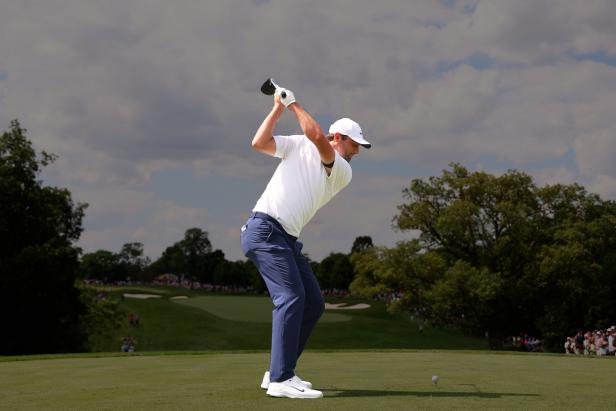It’s about this point every season where my game starts heading into a tailspin because I start getting frustrated about not hitting the ball far enough. Every year I know it’s going to happen, and every year, I still get frustrated.
It sent me toward a rabbit hole which I’m still diving down, but at least it’s helping me find some good information that you, the loyal readers of Golf IQ, could benefit from, too.
Like this fascinating research by Dr. Chris Bishop, an Associate Professor of Strength and Conditioning at the London Sport Institute at Middlesex University. Dr. Bishop and a number of his PhD students underwent a meta-analysis, which organizes the results of lots of different studies and figures out what we can learn from them.
Here’s what they found…
Impulse is a measurement of how much force someone can apply over a given amount of time. When it’s measured over a short amount of time it’s a great indicator of how well someone can apply explosive force.
In other words, yes, you may be strong. But can you exert the strength you do have quickly, like Ivan Drago when he punches that fancy 1980s computer in Rocky IV?
Dr. Bishop found that it’s your ability to apply explosive force that is the most important quality when it comes to golfers’ ability to swing the club fast, and hitting the ball far. Specifically, it was a metric called “jump impulse” which showcased a golfer’s lower body explosive strength, which came out slightly on top.
After various upper and lower body explosive metrics, overall strength was the next most important factor. Things like flexibility and balance weren’t that important when it came to your ability to hit the ball far, according to Dr. Bishop’s analysis, which, to be clear, doesn’t mean they’re bad for you. Having good balance and flexibility is important for your overall health, and hugely helpful when it comes to injury prevention. But if you want to hit the ball long, getting super flexible and balanced isn’t going to help you as much as learning to be more explosive, which makes sense.
Someone like Jon Rahm can hit the ball so far, with such a short backswing, not because he’s wildly flexible, but instead because he’s strong, and has an extremely high force impulse. He can apply lots of force, really quickly, again, like Ivan Drago. Or Rocky Balboa, for that matter.
“A powerful golf swing is fundamentally about force production,” Dr. Bishop says. “You’re going to get huge benefits from explosive upper and lower body training.”
1. Lots of explosive exercises
“The explosive strength stuff like box jumping, or throwing medicine balls is stuff that is good and really, really important,” Dr. Bishop says.
2. A handful of all-out swings
Along those lines, PGA Tour player Stephan Jaeger, who gained a bunch of distance and won on tour this year because of it, says to reserve a small handful of balls each time you’re on the range to swing for the fences.
“For me, it was just 30 balls a day at the end of every range session swinging as fast as I can,” says Stephan Jaeger. “Forget where the ball goes when you do. It’s all about learning to swing your driver really fast, because you can do it more than you think.”
3. Learning to load
Your legs and hips are some of your strongest muscles. This is a good drill from Golf Digest Top 50 coach Dave Phillips, who teaches Jon Rahm: Place a ball under the toes of your lead foot, then another under the heel of your trail foot, and try to squish both into the ground. It’ll help you load up your trail leg—then explode off it.
4. Stretching so you can explode
As I’ve written about before, when you allow your arms to collapse on the backswing, you’re creating a power leak in your golf swing. As Golf Digest Top 50 coach Sean Foley, who helped his student Byeong Hun An increase his clubhead speed from 113 mph to 119 mph, advises, stretch your arms wider on the backswing.
“If you want to increase club head speed, then you want to push your arms wide away,” he says. “It creates more elastic recoil in your body, which is going to allow you to release the club faster.”

